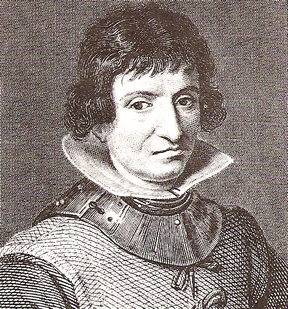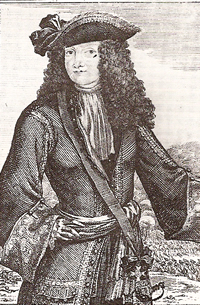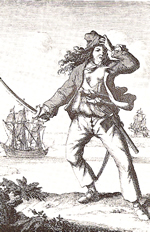 |
Catalina de Erauso, a Spanish 'conquistador - 1630 |
My female protagonist, Caterina, spends much of the story in Signora da Vinci disguised as Cato the Apothecary, a ploy designed to allow her complete freedom to move about in Florentine society and watch over her son, Leonardo. But how realistic is it to suggest that women in centuries past attempted lives lived as men?
The "Two Joans" of Medieval times - Joan of Arc (fifteenth century) and Pope Joan (ninth century) were two of the earliest and most formidable cross-dressers in European history. While many other were less well-known, enough soldiers, sailors, stonemasons, shoemakers, rogues, pirates and clergymen attempted to pass as men that ordinances and official decrees were enacted in several countries forbidding women to wear men's clothing.
She pissed through a horn pipe
Just as a young man might
This fragment of Medieval verse proves that some of these ladies provided themselves with artificial penises, or devices - a leather-covered horn or a silver tube - that allowed them to urinate standing up. Not only did they dress the part of their male counterparts, they swore, smoked pipes and engaged in strenuous physical tasks. Some even married other women.
 |
| Genevieve Premoy a/k/a Chevalier Balthazar |
But the vast majority of known cross-dressers hired on as soldiers and sailors. Some were motivated by adventure or patriotism. Others joined the army or went to sea lusting after their husbands or lovers - unable to stand separation from them. Those in the military were perhaps the most extraordinary. Many were only able to sustain the masquerade for a few months in the confines of a ship at sea, or on the battlefield. But others lasted years. More than a few maintained their secret until they were disrobed for a whipping, were injured or killed in battle.
 |
| Pirate Mary Read |
One woman soldier, her thigh badly wounded, was laid out on the surgeon's table ready to go under the knife. Said the doctor:
"But here is one cut
more than we thought to find."
Brave souls, these women who circumvented societal barriers to take part in activities from which they would otherwise been excluded. For further information on this fascinating subject, read Rudolf M. Dekker's and Lotte C. van de Pol's The Tradition of Female Transvestism in Early Modern Europe, and Valerie R. Hotchkiss's Clothes Make the Man, Female Cross Dressing in Medieval Europe. |